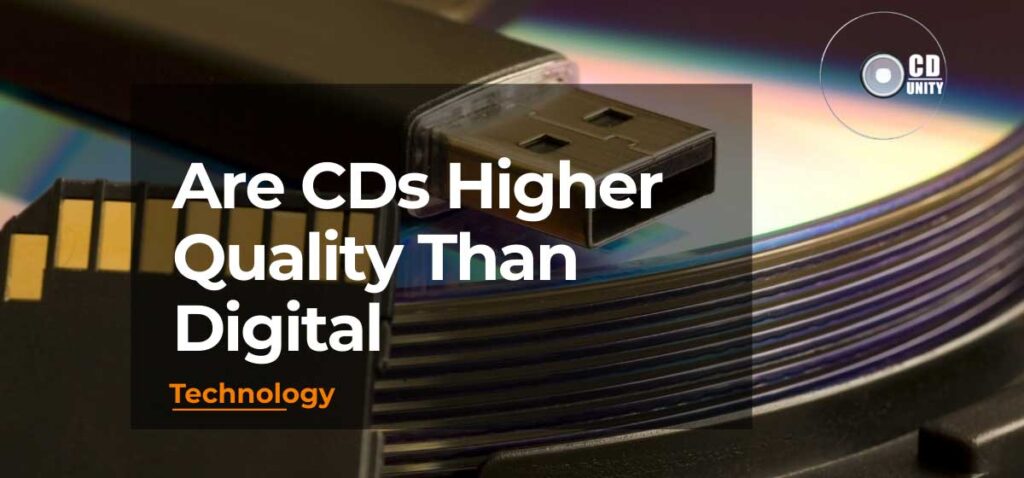
Are CDs Higher Quality Than Digital: All You Have To Know
Are CDs higher quality than digital? Many music lovers will often debate this important question.
With more and more people streaming songs through services like Spotify and Apple Music, the answer to this question is even more relevant today.
But what exactly is sound quality?
Is it just about how loud you can turn up your speakers?
Or does it have something to do with bitrates, compression ratios, or audio fidelity?
For everyone who loves music, understanding these terms may be the key to discovering which media format has the highest sound quality.
So in this blog post, let’s take a deep dive into the quality CDs and digital media and see if we can find an answer that satisfies us all.
Quick Facts
- CDs typically have a higher bitrate (1,411 kilobits per second) than digital formats such as MP3s (320kbps).
- Lossless formats such as WAV and FLAC offer better sound quality than CDs but are more bulky in terms of file size.
- Digital music services like Spotify and Apple Music utilize compressed audio formats that sacrifice some sound fidelity compared to CD’s full resolution recordings.
- Playback devices and set ups can also influence overall sound quality when playing songs from physical media or streaming services.
Understanding Sound Quality
Let’s get the basic principles of sound out of the way.
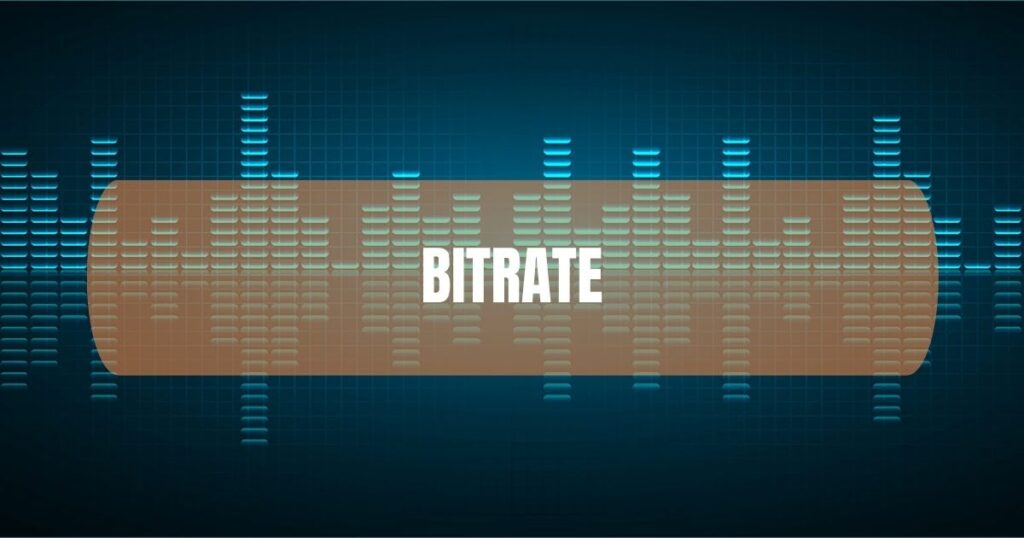
Bitrate
Bitrate is an important factor in determining audio fidelity and quality.
Essentially, the bitrate of music determines how much information is being stored or compressed per second when listening to a song – the higher the bitrate, the more information that can be transferred and thus, a better sound quality.
So what does this mean in terms of CDs versus digital music?
Generally speaking, CDs offer full 44.1kHz uncompressed digital audio with a bitrate of 1,411 kilobits per second – effectively 4.5 times higher than 320 kbps MP3s which are often considered as “High Quality” files (HD).
On top of that, full resolution WAV files also have a bit rate of 1,411kbps at 16bit which essentially means they sound just like CD-quality but without physical storage such as discs (unlike CDs).
With compressed file formats such as MP3s and AAC there may some files that are able to achieve insane bits rates (over 320kbs) meaning technically achievable good sounding results; however due to their very nature depending on compression rates achieved via algorithms it remains dubious for most listener whether these ever reach proper “CD-level” standards where all frequencies are represented correctly throughout any given song.
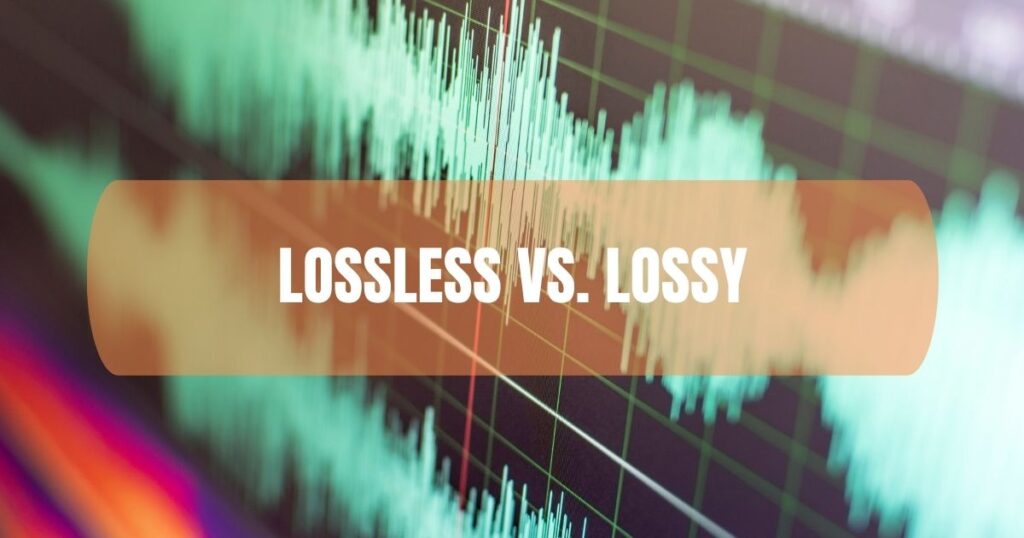
Lossless Vs. Lossy
Understanding sound quality is vital in determining the best way to experience and listen to your favorite tunes.
Lossless audio formats, such as FLAC and WAV, use data compression algorithms which allow them to achieve resolutions up to 32-bit/96kHz and still retain their original sound fidelity.
This resolution is significantly better than CD quality (16-bit/44.1 kHz).
Lossy audio formats on the other hand are heavily compressed using algorithms that drastically reduce file size by discarding data from a source file but at the cost of sacrificing some of its original sound quality.
CDs offer amazing sound due to their lossless format, while MP3s files employ lossy technology for practicality’s sake – albeit with compromised audio fidelity.
Bitrate and bit depth determine how much information an audio file will contain affecting both its size and therefore also impacting its overall sound quality; higher values mean richer sounds with lower distortion levels but at greater dimensions per track.
Comparing Sound Quality
Let’s compare a few of the music formats.
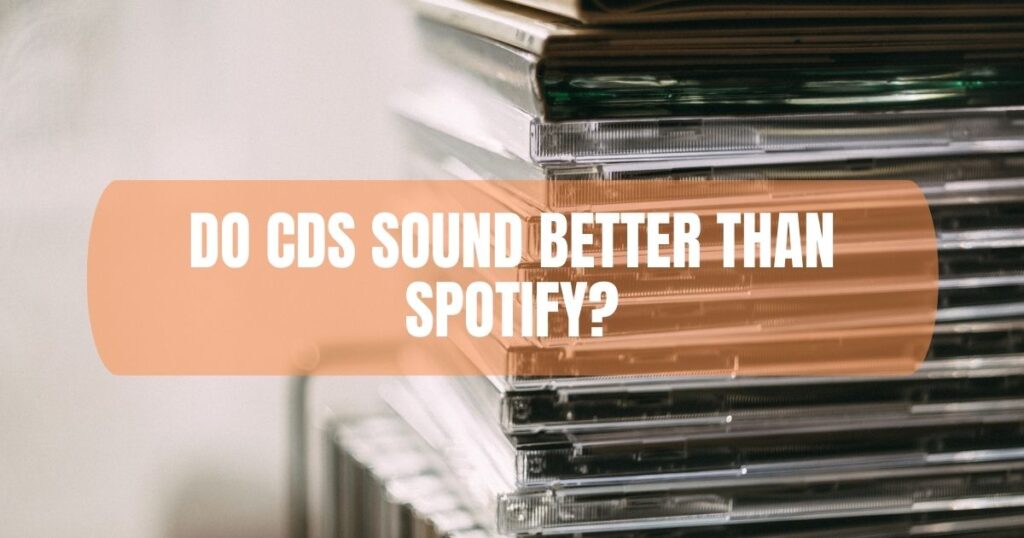
Do CDs Sound Better Than Spotify?
The short answer is yes, CDs are higher quality than digital files. CDs have a much high bit-rate of 1,411 compared to streaming services like Spotify with an average MP3 bit-rate of 320kb.
Furthermore, the fundamental audio format used by CDs establishes uncompressed CD-quality sound; almost 29 times higher than streaming services such as Spotify, Apple Music or Tidal.
In a recent comparison made between the same song from both a CD and streamed from a service like Spotify, it’s clear that the CD version offers longer and smoother reverb tails which can make for a more beautiful listening experience.
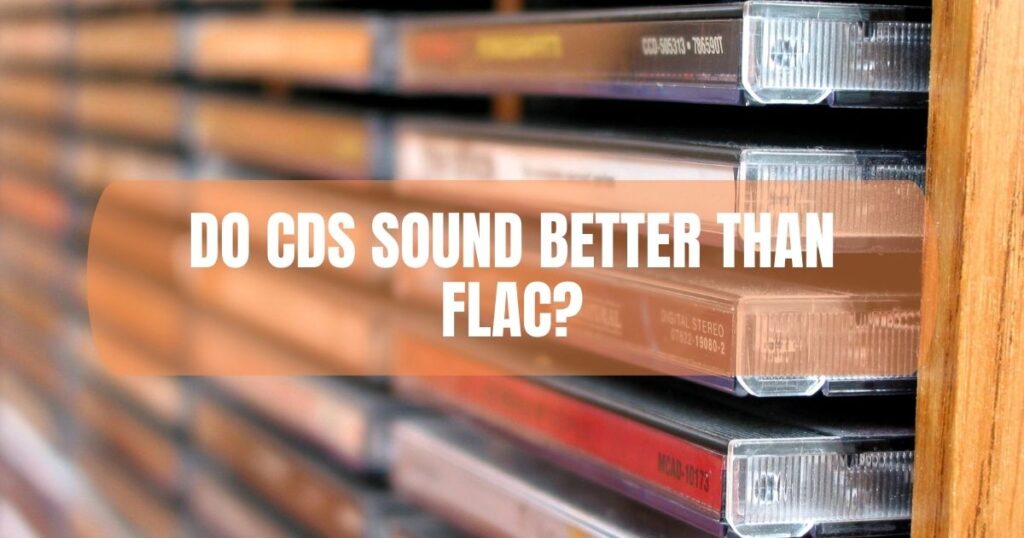
Do CDs Sound Better Than FLAC?
The answer to this question depends on the person, but it’s generally true that CDs have a more vivid, refined sound compared to FLAC files which can sound harder. This is because of their wider dynamic range and greater bit rate (1,411 Kbps vs 1,021Kbps).
CD’s are lossless waves meaning they offer better sound quality than MP3s when encoding audio into digital form. Whereas vinyl records lose some higher frequencies in conversion; thus CD’s can get louder and deliver clear frequencies even at high volumes.
Moreover CDs have a better signal-to-noise ratio —they capture more details from an original recording reducing hissing noise or other audible imperfections— giving them a technical edge over vinyl as well .
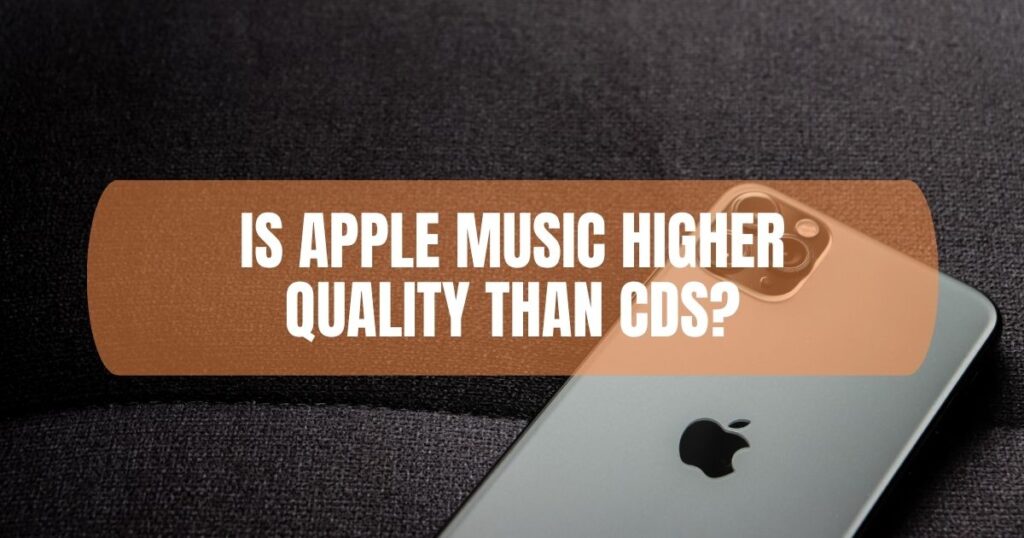
Is Apple Music Higher Quality Than CDs?
While Apple Music has recently introduced lossless audio streaming, it still doesn’t quite offer the kind of sound quality that CDs can provide.
On average, a CD is encoded at 1411 kbps while Apple Music only offers 256 kbps for their standard streaming option.
Apart from lower bitrates, the other major issue when it comes to comparing sound quality between digital and physical media is compression.
Digital music services like Spotify and Apple Music utilize compressed audio formats such as AAC or MP3 which often results in some information being lost during playback compared to what you would hear on a CD which contains uncompressed audio files.
The Technicalities Of CDs
Let’s look into a technical side of the compact discs.
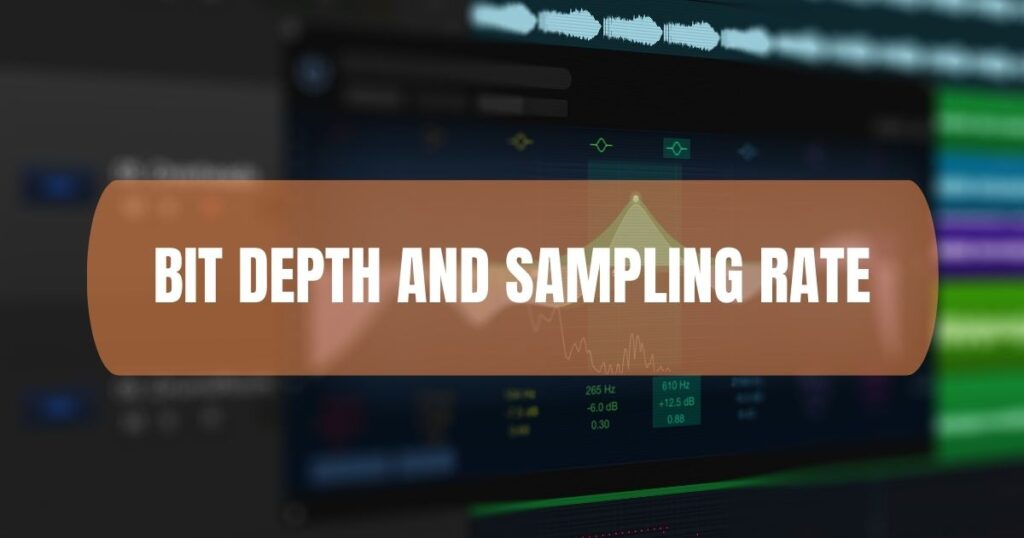
Bit Depth And Sampling Rate
Understanding the technical aspects behind sound quality can help music lovers make educated decisions about which formats to invest in.
Bit depth and sampling rate refer to two key measurements for digital audio recordings, and they can have a huge impact on the overall quality of your listening experience.
Bit depth is measured in bits per sample – or bps – and it determines how much information is captured when an analogue waveform is translated into digital form.
Generally speaking, the higher the number (measured as “bits”), the more space there is to capture detailed sound samples, resulting in richer sonic textures with increased clarity and enhanced dynamic range.
Standard Audio CDs are encoded at 16-bit/44kHz resolution; High-Resolution Audio specifications commonly come in 24-bit/96kHz and 24-bit/192 kHz resolutions.
Sampling rate reflects how often a signal force is registered during playback; usually denoted by hertz (Hz).
The sampling rate dictates how accurately an analogue waveform can be reproduced without distortion or artefacts that could alter its original shape or tone coloration known as aliasing disturbance for high frequencies being heavily processed by treble control knobs(or bass controls etc. when processing low frequencies etc..).
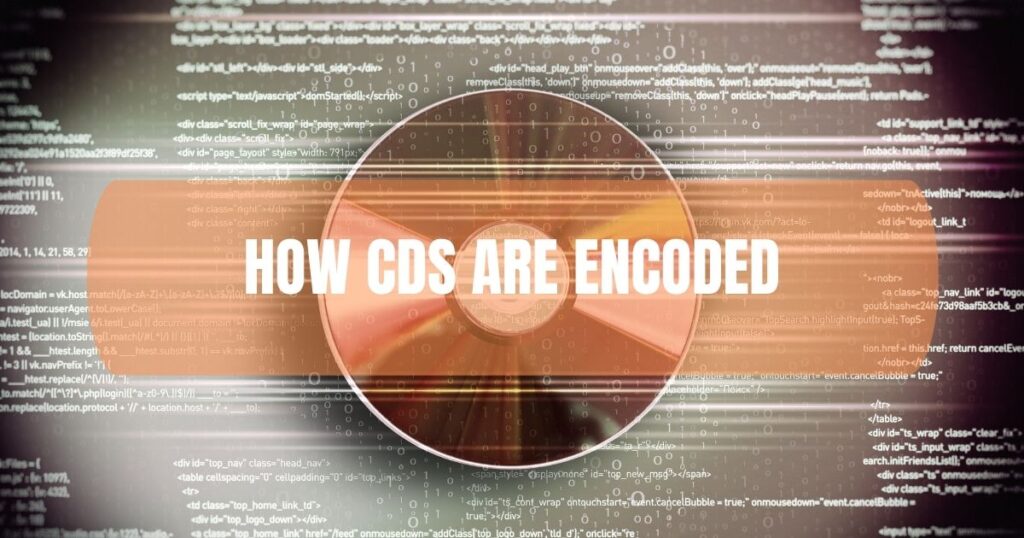
How CDs Are Encoded
CDs use a form of digital encoding called the Pulse Code Modulation (PCM), which stores music as a long series of 1s and 0s that are read by a laser.
This type of coding ensures that the music is not destroyed or inadvertently converted into another format during storage, allowing for high-quality playback every time it is accessed.
A CD’s Laser Read/Write Head first reads the collection of ones and zeros on the disc as they pass by at an astonishingly fast rate before passing them to the microprocessor, which translates these numerical codes back into sound waves with no quality loss or interruption.
Using mathematical formulas through “sample rates” like 44.1kHz (or higher) also helps recreate sonic properties such as timbre, reverberation, etc., resulting in excellent audio fidelity from album to album and even from track to track within an album.
Analog Vs. Digital Outputs
Analog outputs are considered to be the original way of producing music, and this is often achieved either through vinyl records or cassette tapes.
Audio in analogue form has a waveform-based transfer system, which means that the signal contours convey an audio wave’s amplitude (loudness) and frequency information that represents the sound itself.
This type of output produces a warm and natural sounding result as it takes into account all of the subtle nuances associated with different instruments used in a song.
On the other hand, digital outputs use numeric values to represent signals instead of waves.
Since these numbers remain consistent throughout processing regardless of how many times they’re handled or processed – allowing for clarity even when distortion comes into play – digital outputs have become increasingly popular over time due to their noise-reduction capabilities and ease of reproduction from one medium to another such as Bluetooth speakers or earbuds etc.
Digital audio also benefits from having larger bandwidths than its analogue counterpart because there are fewer constraints on data streaming formats; however this does mean that certain levels can be lost during compression if not monitored correctly.
All in All
Hope that clear things up a bit.
Thanks for reading.
Cheers
Josh
Browse our CD duplication products
Hello, I’m Josh, and I’ve been honing my graphic design skills for almost 15 years now, catering to the needs of bands and businesses alike. What really fascinates me is the business aspect of the music industry. In addition to my design work, I also happen to play the Hammond organ, and I strive to share my knowledge through helpful articles that I write exclusively for you all!


